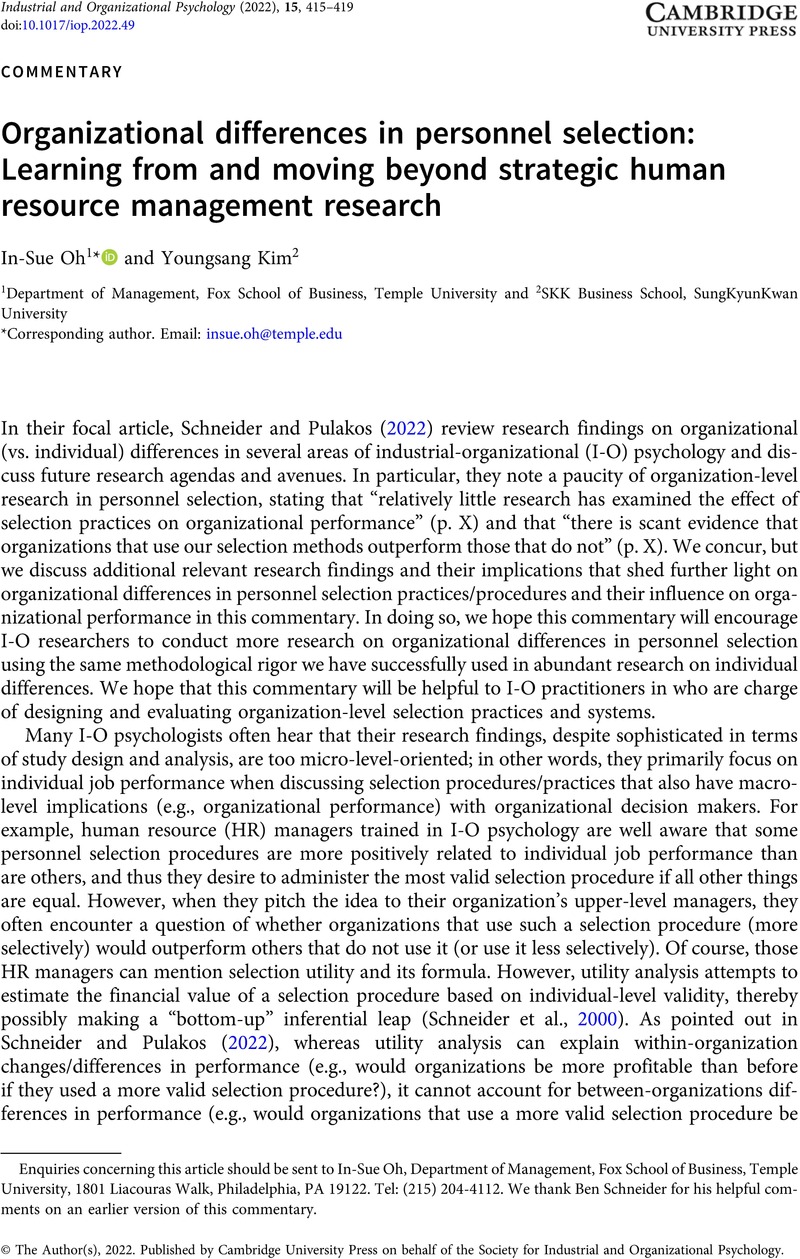Crossref Citations
This article has been cited by the following publications. This list is generated based on data provided by Crossref.
Brymer, Rhett Andrew
and
Rocha, Vera
2024.
Affiliation‐based hiring in startups and the origins of organizational diversity.
Personnel Psychology,
Vol. 77,
Issue. 1,
p.
23.





